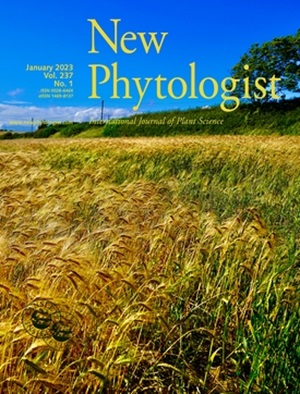Stress resilience in plants: the complex interplay between heat stress memory and resetting
IF 8.3
1区 生物学
Q1 PLANT SCIENCES
引用次数: 0
Abstract
Heat stress (HS) poses a major challenge to plants and agriculture, especially during climate change-induced heatwaves. Plants have evolved mechanisms to combat HS and remember past stress. This memory involves lasting changes in specific stress responses, enabling plants to better anticipate and react to future heat events. HS memory is a multi-layered cellular phenomenon that, in addition to epigenetic modifications, involves changes in protein quality control, metabolic pathways and broader physiological adjustments. An essential aspect of modulating stress memory is timely resetting, which restores defense responses to baseline levels and optimizes resource allocation for growth. Balancing stress memory with resetting enables plants to withstand stress while maintaining growth and reproductive capacity. In this review, we discuss mechanisms and regulatory layers of HS memory and resetting, highlighting their critical balance for enhancing stress resilience and plant fitness. We primarily focus on the model plant Arabidopsis thaliana due to the limited research on other species and outline key areas for future study.植物的应激恢复力:热应激记忆和重置之间的复杂相互作用
热应激(HS)对植物和农业构成了重大挑战,特别是在气候变化引起的热浪期间。植物已经进化出对抗HS和记忆过去压力的机制。这种记忆包括特定应激反应的持久变化,使植物能够更好地预测和应对未来的高温事件。HS记忆是一种多层细胞现象,除了表观遗传修饰外,还涉及蛋白质质量控制、代谢途径和更广泛的生理调节的变化。调节压力记忆的一个重要方面是及时重置,它将防御反应恢复到基线水平,并优化资源分配以促进增长。平衡压力记忆与重置使植物承受压力,同时保持生长和繁殖能力。本文主要讨论了HS记忆和重置的机制和调控层,强调了它们在提高植物抗逆性和适应性方面的关键平衡。由于其他物种的研究有限,我们主要关注模式植物拟南芥,并概述了未来研究的重点领域。
本文章由计算机程序翻译,如有差异,请以英文原文为准。
求助全文
约1分钟内获得全文
求助全文
来源期刊

New Phytologist
生物-植物科学
自引率
5.30%
发文量
728
期刊介绍:
New Phytologist is an international electronic journal published 24 times a year. It is owned by the New Phytologist Foundation, a non-profit-making charitable organization dedicated to promoting plant science. The journal publishes excellent, novel, rigorous, and timely research and scholarship in plant science and its applications. The articles cover topics in five sections: Physiology & Development, Environment, Interaction, Evolution, and Transformative Plant Biotechnology. These sections encompass intracellular processes, global environmental change, and encourage cross-disciplinary approaches. The journal recognizes the use of techniques from molecular and cell biology, functional genomics, modeling, and system-based approaches in plant science. Abstracting and Indexing Information for New Phytologist includes Academic Search, AgBiotech News & Information, Agroforestry Abstracts, Biochemistry & Biophysics Citation Index, Botanical Pesticides, CAB Abstracts®, Environment Index, Global Health, and Plant Breeding Abstracts, and others.
 求助内容:
求助内容: 应助结果提醒方式:
应助结果提醒方式:


